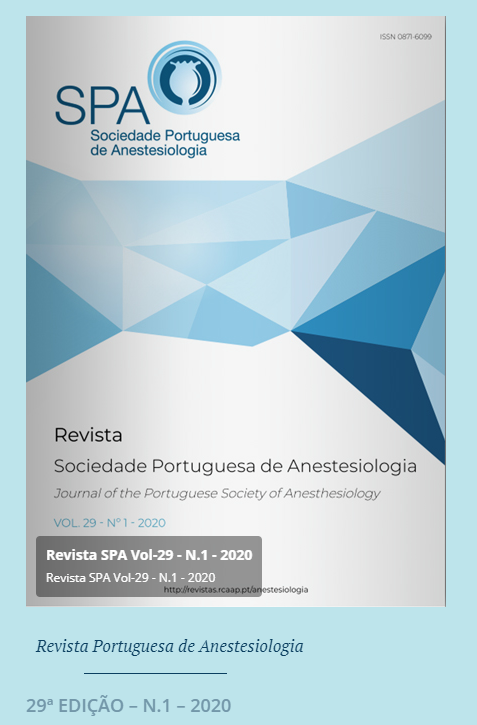Malignant Hyperthermia: A Case Report
DOI:
https://doi.org/10.25751/rspa.19213Keywords:
Anesthesia; Dantrolene/therapeutic use; Malignant Hyperthermia; Neuromuscular Depolarizing Agents/adverse effects; Succinylcholine/ adverse effectsAbstract
Malignant hyperthermia (MH) is a very rare inherited disorder. The incidence of MH is 1:100 000 although the prevalence of susceptibility to MH is estimated at 1:2000 to 1:3000. MH has a mortality rate of 9.5%. MH is an autosomal dominant disorder and three genes account for the genetic basis of 70% of the patients - RYR1, CACNA1S and STAC3. MH is characterized by an increased body metabolism with hyperthermia, increased carbon dioxide production, skeletal muscle rigidity along with rhabdomyolysis, hyperkalaemia and acidosis with hyperlactacidaemia. These occur when a MH-susceptible individual is exposed to some known triggers such potent volatile anaesthetics and succinylcholine. We present a case report of MH in 22-year-old male ASA II, without any personal or familial MH susceptibility known, admitted to elective dental extraction who suffered a MH crisis. The patient was treated for MH and demonstrated a significant clinical improvement with the administration of dantrolene.
Downloads
References
Brandom BW, Callahan PM. Malignant Hyperthermia An Update. Adv Anesth. 2015; 33:113-28.
Rosenberg H, Davis M, James D, Pollock N, Stowell K. Malignant hyperthermia: a review. Orphanet J Rare Dis. 2007;2:21.
Litman RS, Griggs SM, Dowling JJ, Riazi S. Malignant hyperthermia susceptibility and related diseases. Anesthesiology. 2018;128:159-67. doi: 10.1097/ALN.0000000000001877.
Gupta PK, Hopkins PM. Diagnosis and management of malignant hyperthermia. BJA Educ. 2017;17:249-54.
Lee YS, Kim WY, Lee SH, Baek SM, Ok SJ, Kim JH, et al. A case of malignant hyperthermia during anesthesia induction with sevoflurane - A case report. Korean J Anesthesiol. 2010;59 Suppl(Suppl):S6–S8. doi: 10.4097/kjae.2010.59.S.S6.
Hopkins PM, Ruffert H, Snoeck MM, Girard T, Glahn KP, Ellis FR, et al. European Malignant Hyperthermia Group guidelines for investigation of malignant hyperthermia susceptibility. Br J Anaesth 2015; 115:531-9. doi: 10.1093/bja/aev225.
Denborough MA, Forster JFA, Lovell RRH, Maplestone PA, Villiers JD. Anaesthetic deaths in a family. Br J Anaesth. 1960;34:395
Kim DC. Malignant hyperthermia. Korean J Anesthesiol. 2012; 63:391-401.
Larach MG, Gronert GA, Allen GC, Brandom BW, Lehman EB. Clinical presentation, treatment, and complications of malignant hyperthermia in North America from 1987 to 2006. Anesth Analg. 2010;110:498-507. doi: 10.1213/ANE.0b013e3181c6b9b2.
Glahn KP, Ellis FR, Halsall PJ, Müller CR, Snoeck MM, Urwyler A, et al. Recognizing and managing a malignant hyperthermia crisis: guidelines from the European Malignant Hyperthermia Group. Br J Anaesth. 2010;105:417-20. doi: 10.1093/bja/aeq243.
Downloads
Published
How to Cite
Issue
Section
License
Articles are freely available to be read, downloaded and shared from the time of publication.
The RSPA reserves the right to commercialize the article as an integral part of the journal (in the preparation of reprints, for example). The author should accompany the submission letter with a declaration of copyright transfer for commercial purposes.
Articles are published under the terms of the Creative Commons Attribution Non-Commercial License (CC BY-NC).
After publication in RSPA, authors are allowed to make their articles available in repositories of their home institutions, as long as they always mention where they were published.


